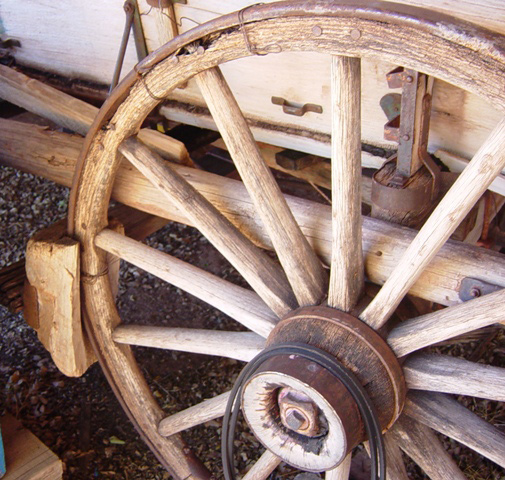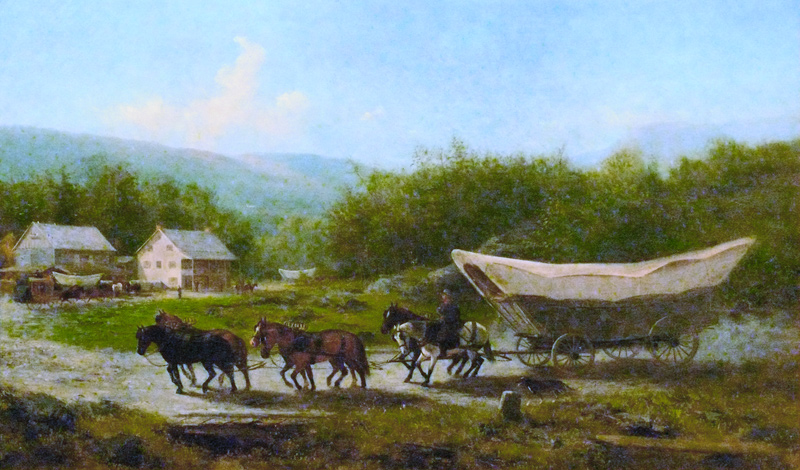In Pittsburgh, Meriwether Lewis is building the barge prior to departing down the Ohio River. Wagon freighting between Philadelphia and Pittsburgh was described by François André Michaux after his 1802 visit.
Freighting from Philadelphia
The conveyance of merchandise from Philadelphia to Pittsburgh is made in large covered waggons, drawn by four horses two a-breast. The price of carrying goods varies according to the season; but in general it does not exceed six piastres the quintal. They reckon it to be three hundred miles from Philadelphia to Pittsburgh, and the carriers generally make it a journey of from twenty to twenty-four days. The price of conveyance would not be so high as it really is, were it not that the waggons frequently return empty; notwithstanding they sometimes bring back, on their return to Philadelphia or Baltimore, fur skins that come from Illinois or Ginseng, which is very common in that part of Pensylvania.
—François André Michaux[1]François André Michaux, Travels to the West of the Alleghany Mountains (1805 reprint from London edition), p. 60–1 in Reuben G. Thwaites, Travels West of the Alleghanies (Cleveland: The Arthur H. … Continue reading
The Conestoga Wagon
Conestoga Wagon (1883)
by Newbold Hough Trotter (1827-1898)
Painting in the State Museum of Pennsylvania. Photo by Ad Meskens, commons.wikimedia.org/wiki/File:Conestoga_Wagon_1883.jpg. Permission to use given via the Creative Commons Attribution-ShareAlike 3.0 Unported license.
Introduced during the eighteenth century by Pennsylvania Germans, the Conestoga wagon was named after the Conestoga River and Township in Lancaster County. Those places were named for the Conestoga People, an Iroquoian group.[2]William Bright, Native American Placenames of the United States (Norman: University of Oklahoma Press, 2004), 119. The wagon’s curved bottom and angled sides shifted any moving cargo to the middle of the wagon. Did Lewis have cargo shipped in Conestoga wagons? Not likely at all. His tonnage was too low and the roads too poor for such large wagons. For more, see Shipping Supplies, “The Transportation Challenge” and Leaving Pittsburgh.
Experience the Lewis and Clark Trail
The Lewis and Clark Trail Experience—our sister site at lewisandclark.travel—connects the world to people and places on the Lewis and Clark Trail.
Plan a trip related to July 25, 1803:

Notes
| ↑1 | François André Michaux, Travels to the West of the Alleghany Mountains (1805 reprint from London edition), p. 60–1 in Reuben G. Thwaites, Travels West of the Alleghanies (Cleveland: The Arthur H. Clark Co., 1904), p. 158. |
|---|---|
| ↑2 | William Bright, Native American Placenames of the United States (Norman: University of Oklahoma Press, 2004), 119. |


